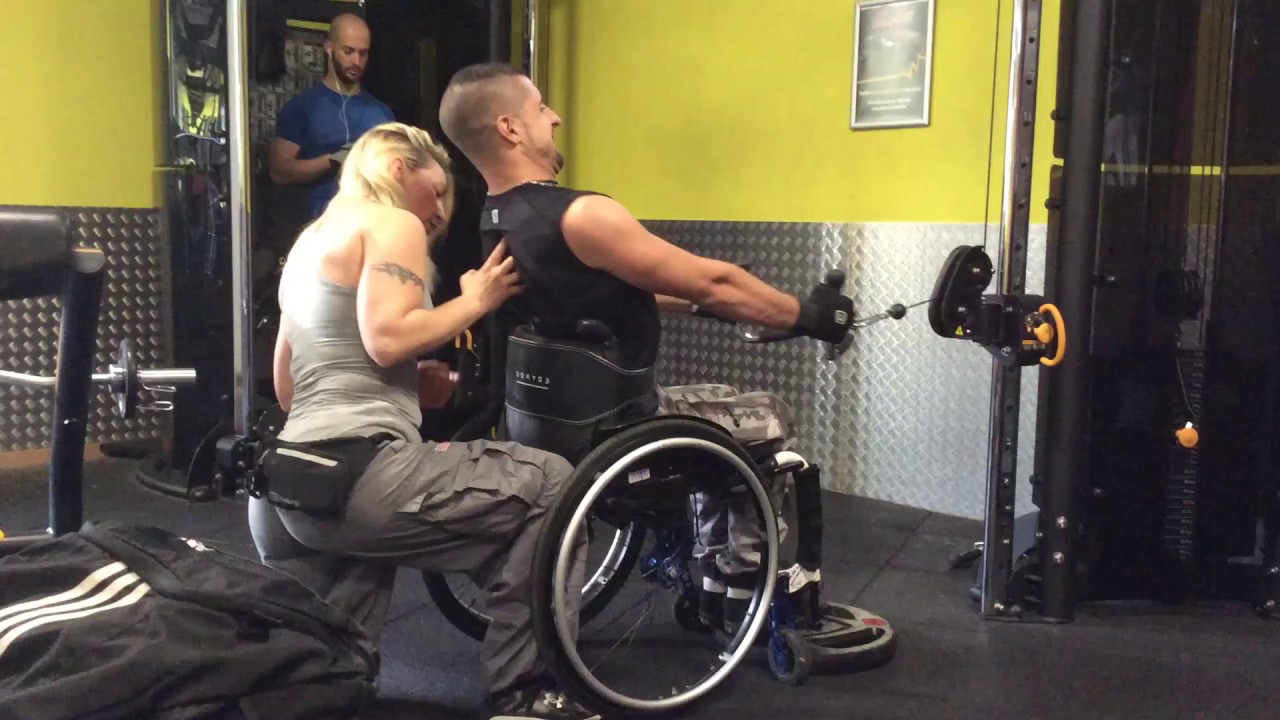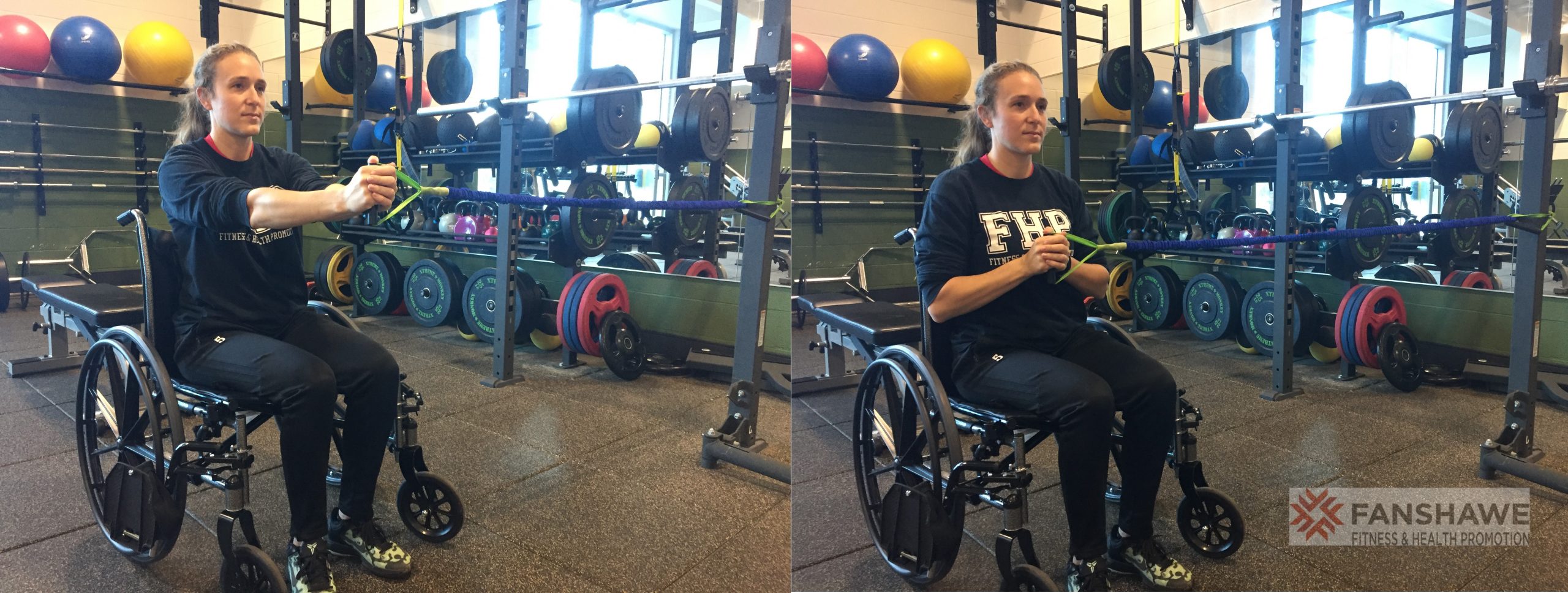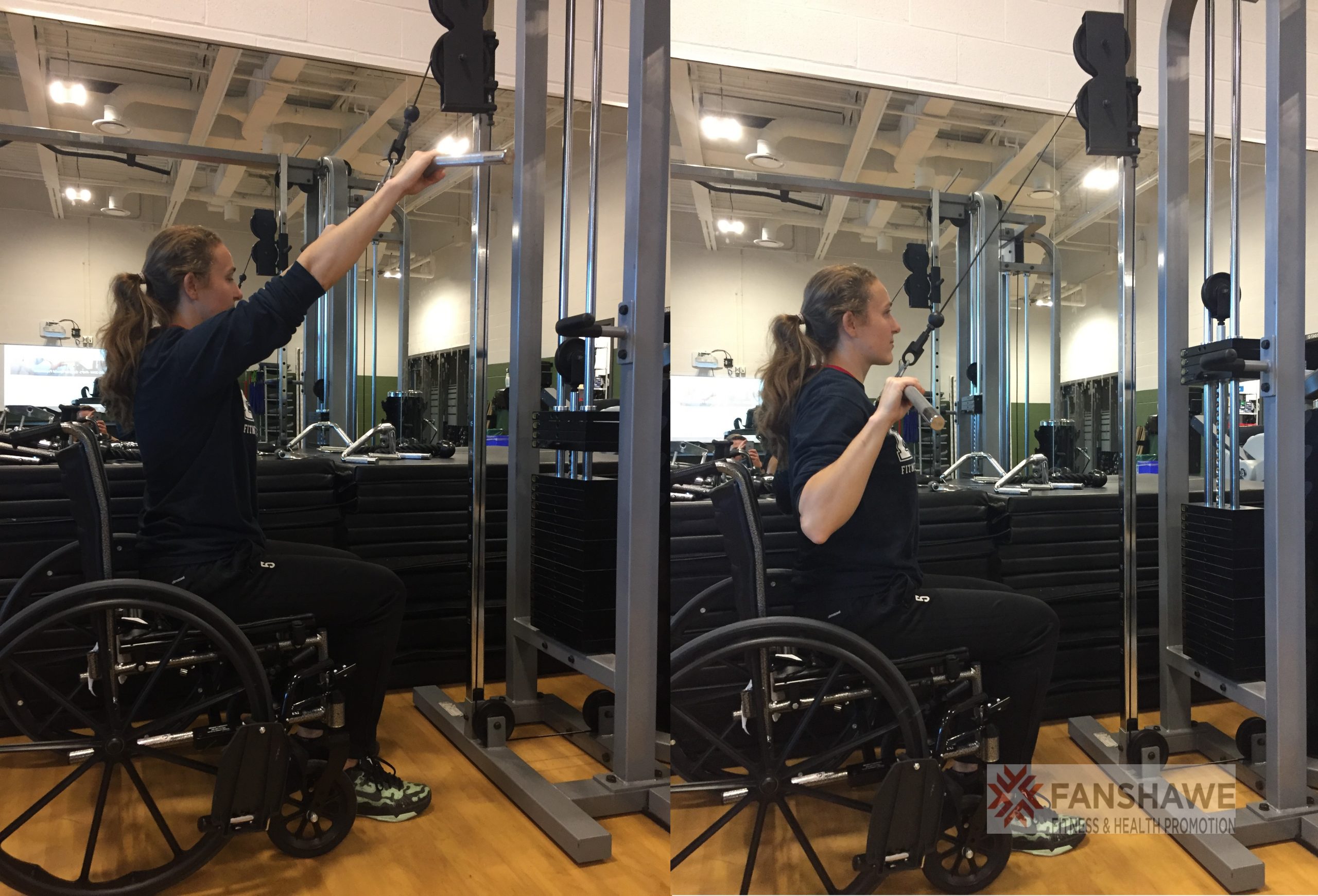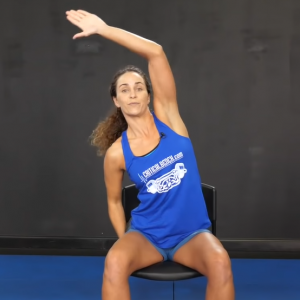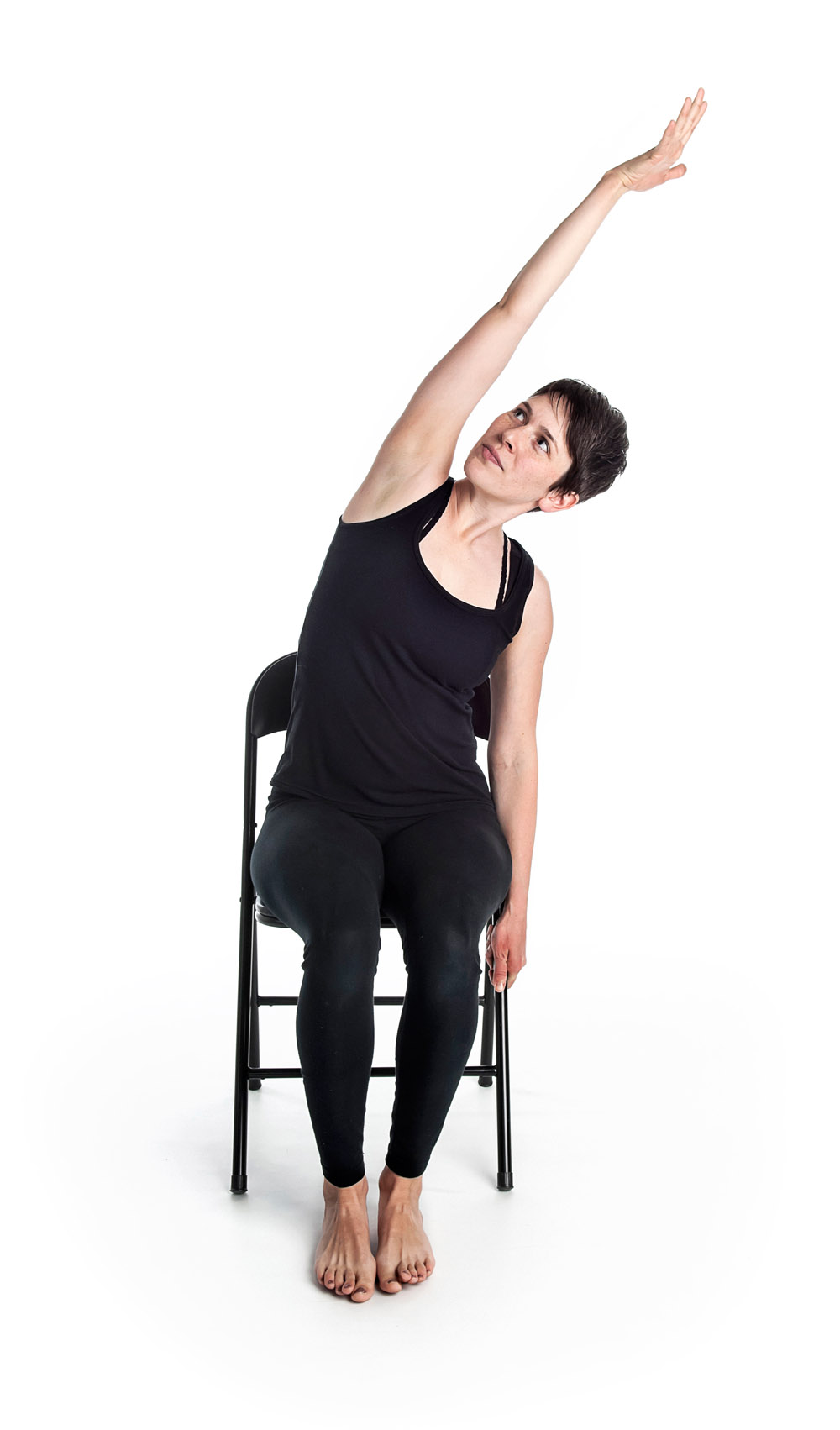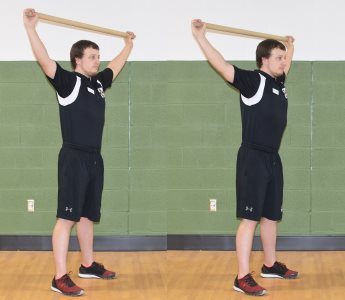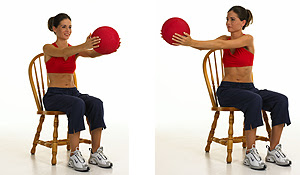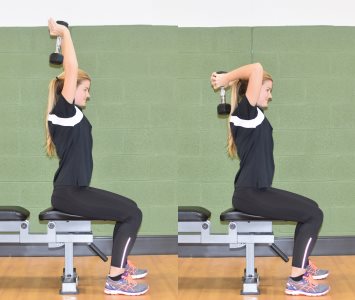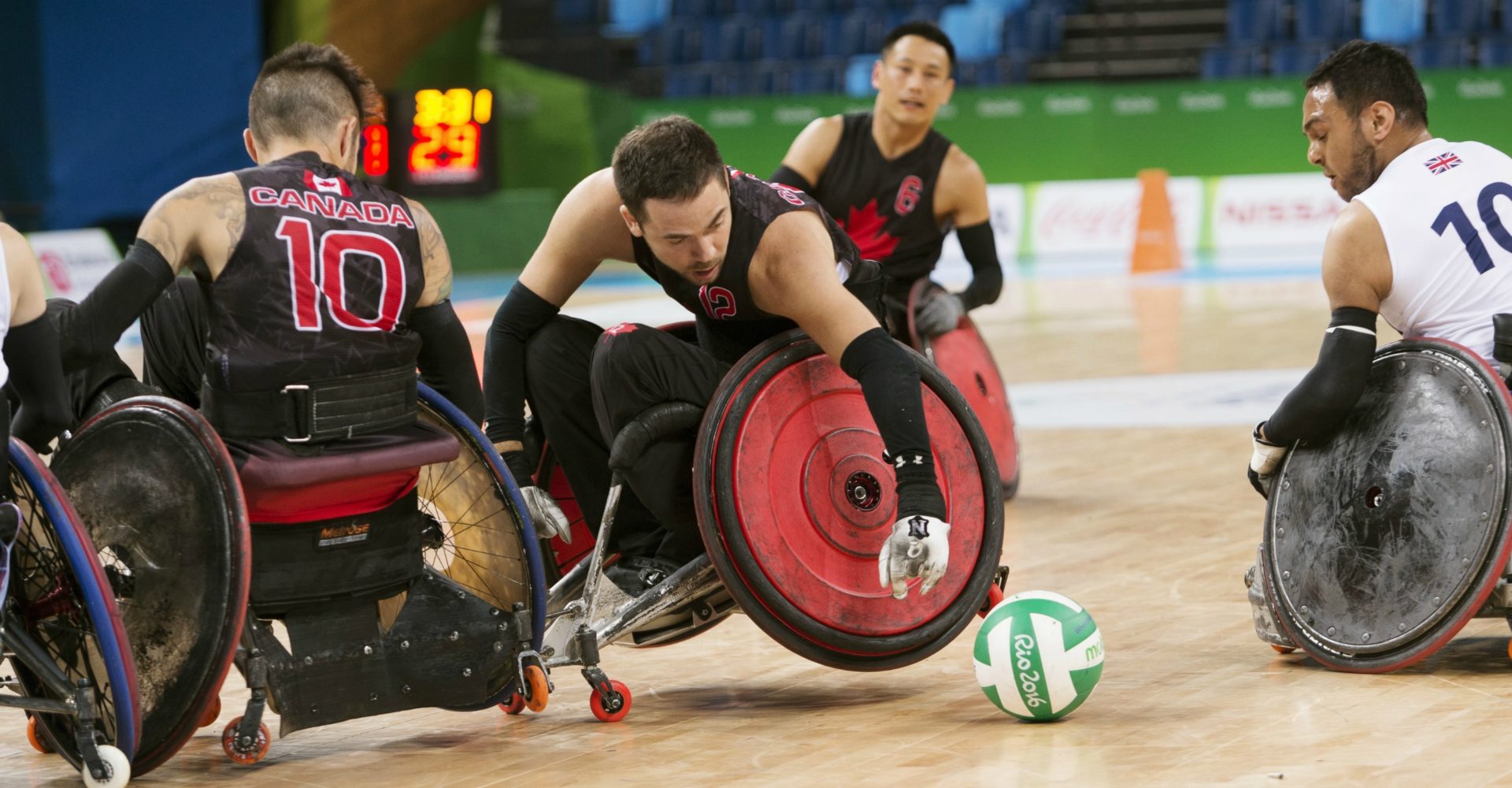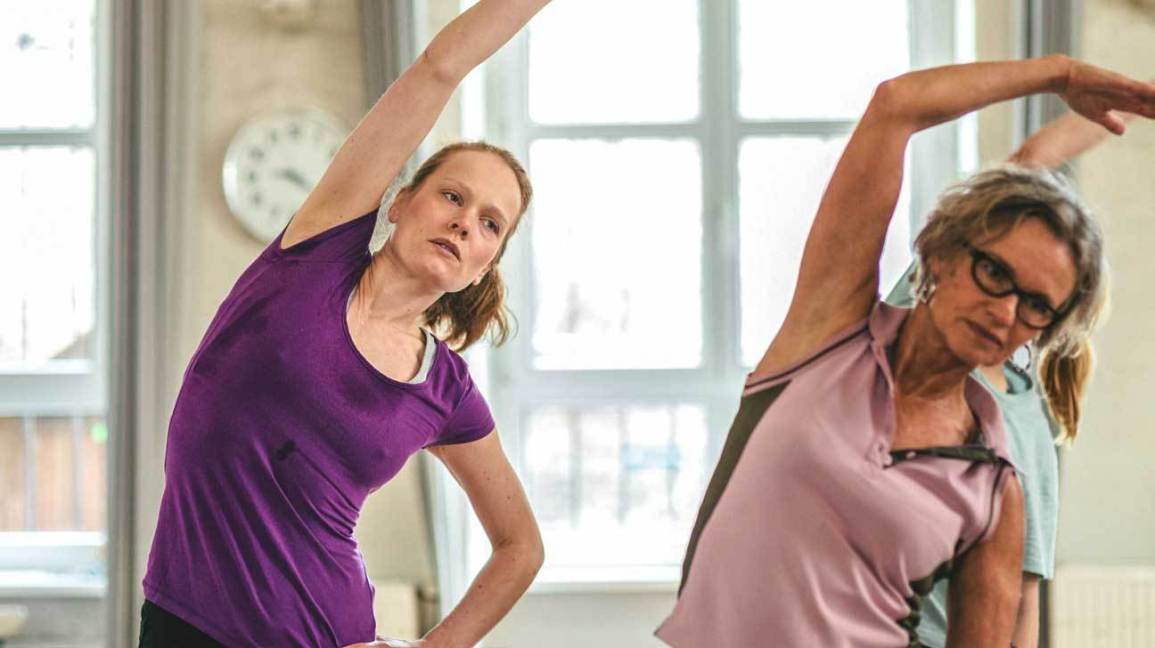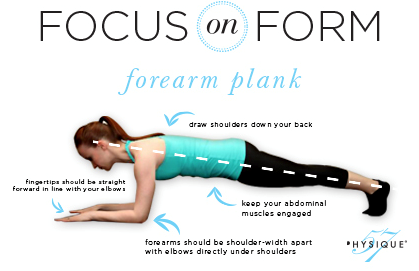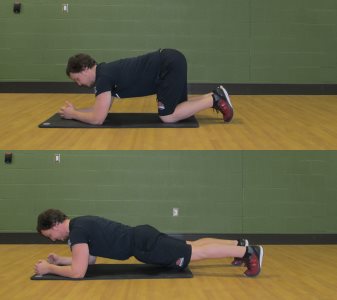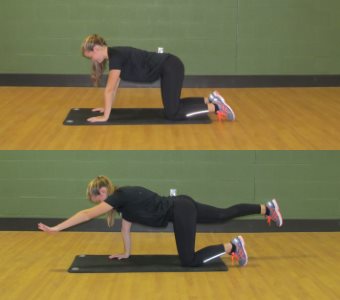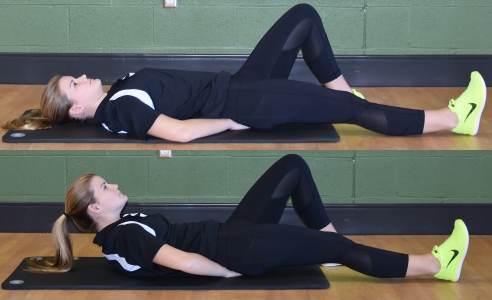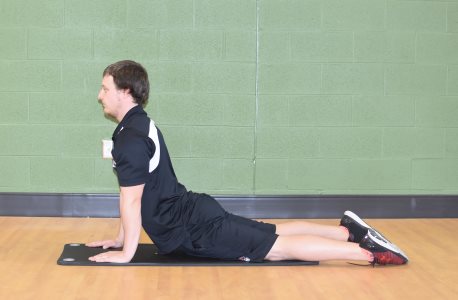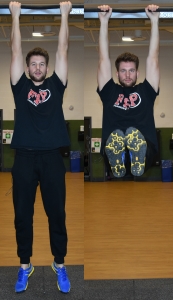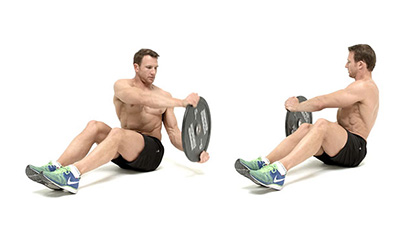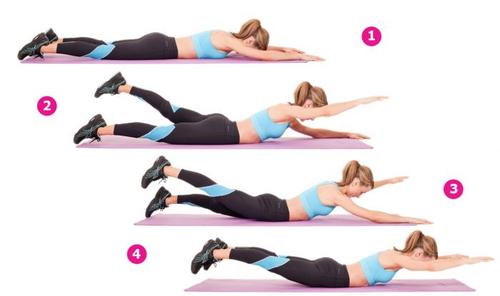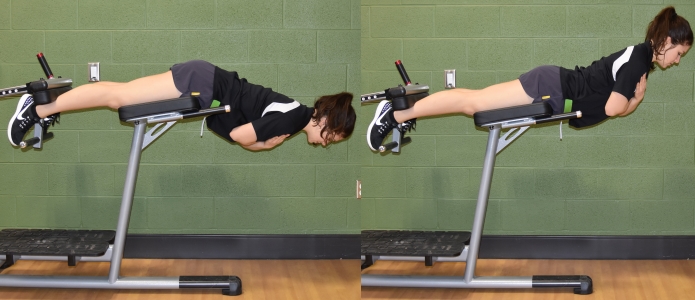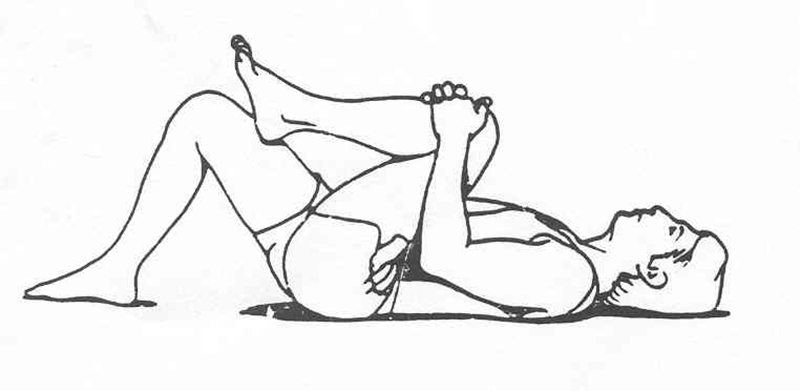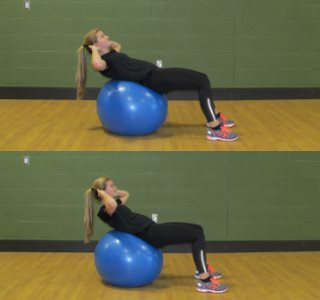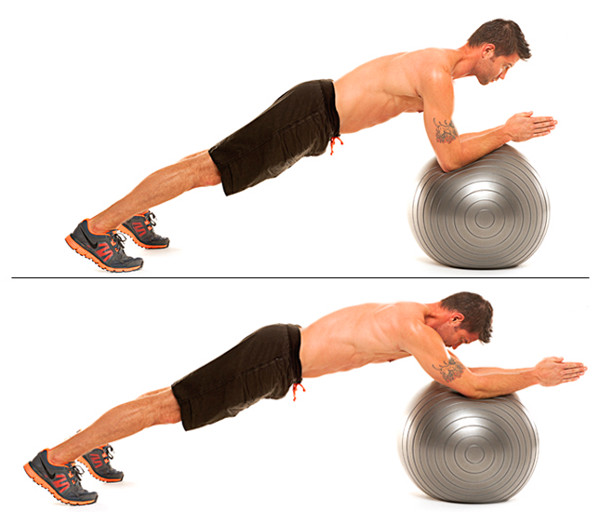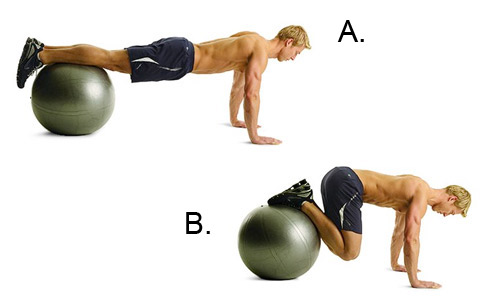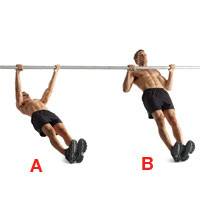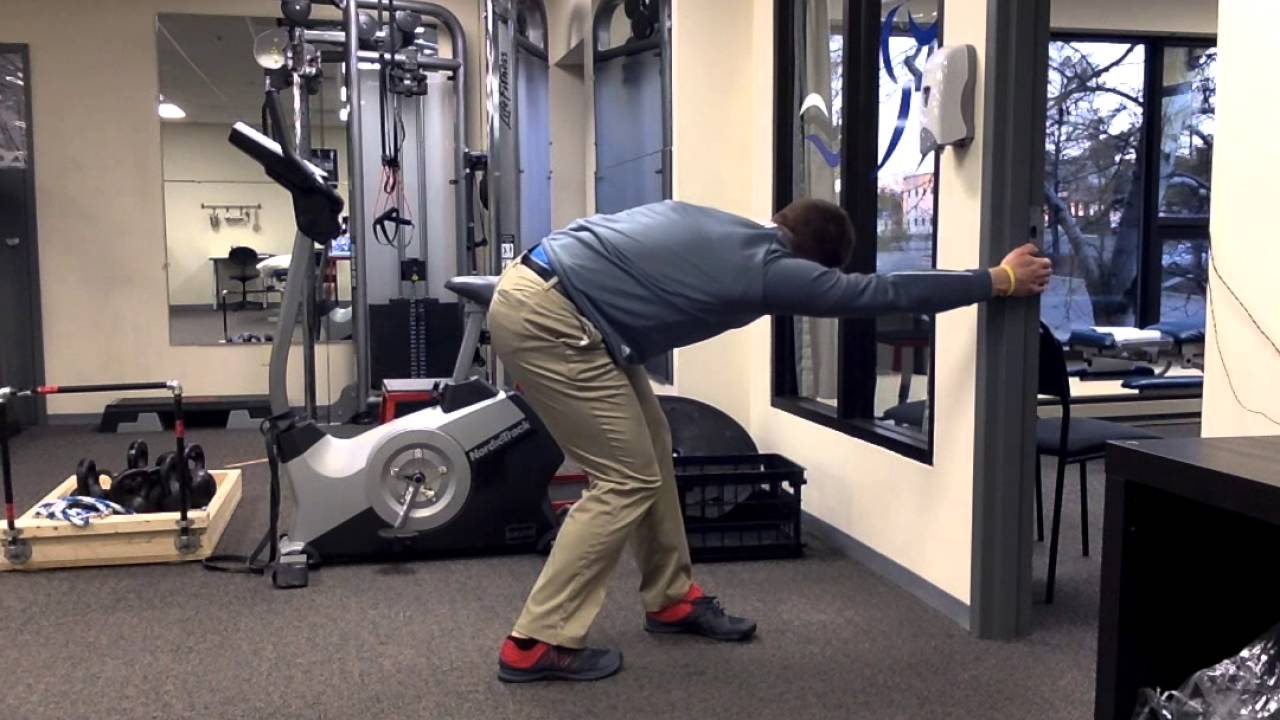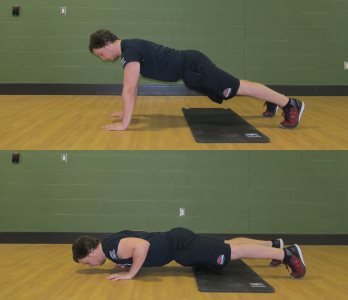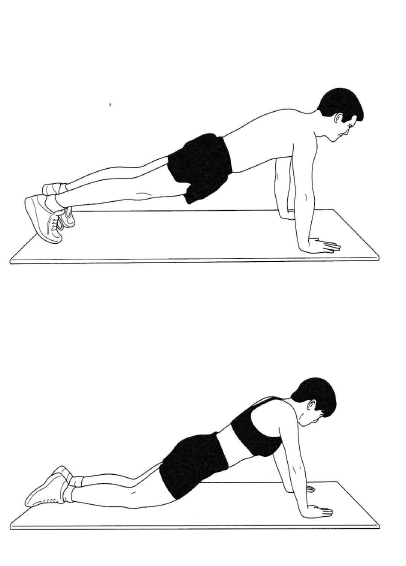In small groups and using the Functional Movement Screen (FMS) developed by Gray Cook, assess the quality of two classmates’ movement in the ‘Big Three’ functional movement patterns.
FMS Scoring reminders: 0 – pain (referral), 1 – can’t complete either movement pattern correctly, 2- completed a less demanding variation or part of the movement pattern, 3 – perfect completion of movement pattern.
A split pattern is where the movement involves on one side at a time (e.g., 1 leg hurdle step). A straight pattern where the movement involves both sides (e.g., 2 leg squat). The split pattern will demonstrate asymmetry that may not be noticed during a straight pattern movement.
In split pattern movements, record right and left sides separately. Look for asymmetry (i.e. differences on right and left side).
Note: The seven FMS movement patterns require familiarity with the following bony structures or superficial landmarks: Tibial tuberosity, ASIS, Lateral and Medial Malleoli, Distal wrist crease, Joint line of knee.
Deep Squat
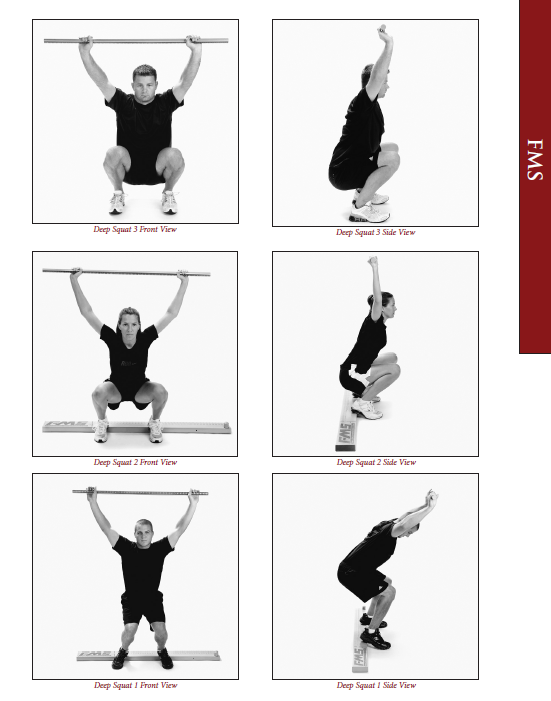
Set-up Verbal Instructions:
- Stand tall with your feet shoulder-width apart and toes pointed forward.
- Grasp the dowel in both hands and place it on top of your head so your shoulders and elbows are at 90 degrees.
- Press the dowel so that it is directly above your head.
- While maintaining an upright torso and keeping your heels and the dowel in position, descend into a squat as deeply as possible.
- Hold the bottom position for a count of one, and then return to the starting position.
Tips for testing:
- The client can perform the movement up to three times if necessary.
- If a score of three is not achieved, repeat above instructions using the board under the client’s heels.
- Observe the client from the front and side.
- All positions, including the foot position, should remain unchanged when the heels are elevated with either the FMS kit or a similar size board.
Scoring:
3:
- Torso is parallel with tibia or toward vertical
- Femur is below horizontal
- Knees do not track inside of feet
- Dowel aligned over feet
2:
- Same as above but the heels are elevated
1:
- Tibia and torso are not parallel
- Femur is not below horizontal
- Knees track inside of feet
- Dowel is not aligned over feet
0:
|
Hurdle Step
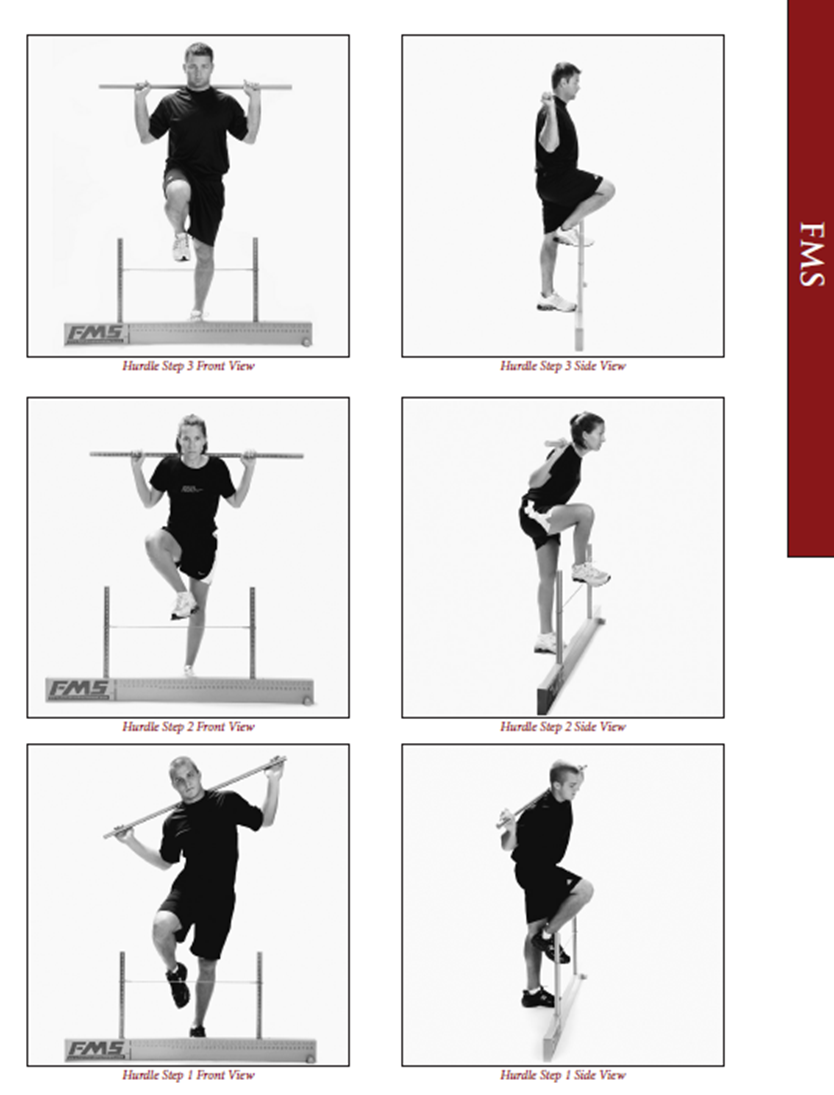
Set-up Verbal Instructions:
- Stand tall with your feet together and toes touching the test kit.
- Grasp the dowel in both hands and place it on top of your head so your shoulders and elbows are at 90 degrees. Then while maintaining hand position, lower dowel to the base of the neck and across the shoulders.
- While keeping an upright torso, raise the right leg and step over the hurdle, making sure to raise the foot towards the shin and maintain foot alignment vertically with the ankle, knee and hip.
- Touch the floor with your heel and return to the starting position while maintaining the same alignment.
Tips for testing:
- Ensure the cord is aligned properly.
- Tell the client to stand as tall as possible at the beginning of the test.
- Score the moving leg.
- Repeat the test on both sides.
- The client can perform the movement up to three times on each side if necessary.
- Watch for a stable torso.
- Observe from the front and side.
- Make sure the toes of the stance leg stay in contact with the hurdle during and after each repetition.
- If the client physically cannot bring the feet together to touch, ask them to bring their feet together as close as possible with toes touching the test kit, then allow them to perform test from that position.
Scoring:
3:
- Hips, knees and ankles remain aligned in the sagittal plane
- Minimal to no movement in lumbar spine
- Dowel and hurdle remain parallel
2:
- Alignment is lost between hips, knees and ankles
- Movement in Lumbar Spine
- Dowel and hurdle do not remain parallel
1:
- Inability to clear the cord during the hurdle step
- Loss of Balance
0:
|
Inline Lunge
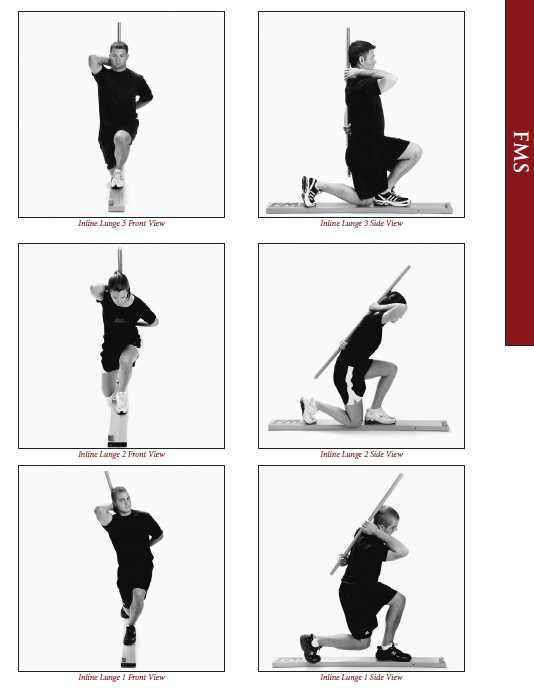
Set-up Verbal Instructions:
- Step onto the center of the board with the right foot and your toe on the zero mark.
- The left heel should be placed according to your tibial measurement at “__”.
- Both toes must be pointing forward with the entire foot in contact with the board.
- Place the dowel along the spine so it touches the back of your head, your upper back and your tailbone.
- While grasping the dowel, your right hand should be in the curve of your neck, and the left hand should be in the curve of your lower back.
- Maintaining an upright posture so the dowel stays vertical and you maintain the three points of contact, descend into a lunge position so your right knee touches the center of the board.
- Then, return to the starting position.
Tips for testing:
- The front leg identifies the side you are scoring.
- The dowel remains vertical and in contact with the head, upper back and tail bone during movement.
- The front heel remains in contact with the board, and the back heel touches the board when returning to the starting position. Watch for loss of balance. For inline lunge, a loss of balance is stepping off the board.
- Remain close to the client to prevent a complete loss of balance.
- It’s important to remember that if the person does not at least make contact with the board or ground with the knee somewhere, it is the inability to complete the movement pattern, this is a score of one.
- Repeat the test on both sides.
- The client can perform the movement up to three times on each side if necessary.
Scoring:
3:
- Dowel contact maintained
- Dowel remains vertical
- Minimal to no torso movement
- Dowel and feet remain in sagittal plane
- Knee touches the center of the board
- Front foot remains in start position
2:
- Dowel contact not maintained
- Dowel does not remain vertical
- Movement in torso
- Dowel and feet do not remain in sagittal plane
- Knee does not touch center of the board
- Flat front foot does not remain in start position
1:
- Loss of balance by stepping off the board
- Inability to complete movement pattern
- Inability to get into set up position
0:
|
Remember to save, then mark this task complete and move onto the next task.




